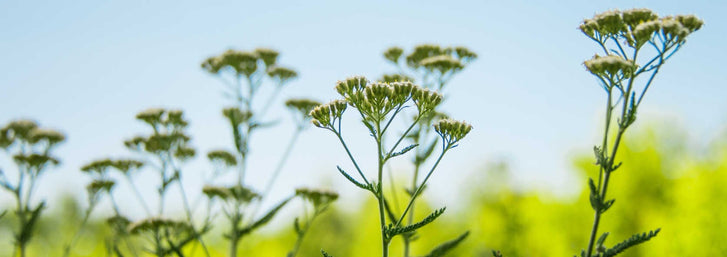
Kat Jones

Katherine’s Story
Indoor sprouting, including growing wheatgrass and sunflower greens, released me from a life of fear as a result of a brush with cancer in 1996. At the end of nine months of chemical onslaught from conventional treatment for Hodgkins Lymphoma, I was ready to soak up everything I needed to know to get out from under the grip of fear. The fear of cancer reoccurring was with me every moment of every day.
The Wheatgrass book by Ann Wigmore opened the door for me to the knowledge that the human body has the ability to heal itself. It has the power to heal any ailment or disease. Changing our diet to a living plant based diet is the key. This information is a hidden treasure that has been buried and most of us never find it, but “when the student is ready the teacher appears.” I WAS READY.
The Wheatgrass Book inspired me so much that I immediately followed the instructions on how to grow wheatgrass. I don’t recall it being difficult. I obtained trays, organic soil, organic seeds and a set of shelves. I set them up in my kitchen. I was living in London at the time and had no problem growing it. I took delight in seeing how quickly the grass grew. One ounce of juice is equivalent to two pounds of green vegetables. That was powerful nutrition every day. Generally, I consumed two ounces every morning.
With the success of grown wheatgrass I ventured onto growing other microgreens. Sunflower greens are so tasty, easy to grow and twenty-five percent protein, high in B vitamins and antioxidants. That is why I included them in my indoor garden.
I didn’t stop there. I expanded my repertoire to Alfalfa, Broccoli, Clover, Fenugreek, Mung Beans, Lentils and quite a few others, which were also easy to grow and without the need for soil.They are inexpensive to grow and from my study in relation to them, I found that they are the most nutritious whole food on the planet containing natural sources of vitamins, minerals, enzymes and amino acids. They are alive and capable of transferring their life energy to your body.
With all this amazing information, I thought to myself “I do not have to get sick again” provided I make these baby plants a big part of my daily diet.
My favorite way to use them now is my morning pudding made with whatever fruit I have at home and to that I add alfalfa, broccoli, fenugreek, mung beans or whatever sprout I have on hand at the time. I blend them to a creamy consistency and enjoy. I may add ginger or/and fresh turmeric as well.
I love a sprouted wheat sandwich at lunch time filled with sunflower greens, mung beans and once again use whatever sprouts I have on hand plus tomatoes, onions, avocado and veganaise. Delicious!
A raw soup in the evenings with a salad incorporating these wonder seedlings tops of my day. I am alive and bounding with energy the following day.
I am thankful for this great treasure of knowledge that has kept me away from the doctor's office since I read Ann Wigmore’s book way back in 1996. You don’t have to be sick, and your body can heal. That is a great hope for anyone that suffering right now. Changing the diet to a plant based diet is crucial.
I can’t tell you how happy I was to have found Wheatgrasskits.com when I moved to the U.S. to live in 2007. They had all the supplies I needed in one place to continue with my indoor garden. Great company.
I share all that I have learned and continue to learn, including recipe demonstrations, at a bi-weekly class at Beehive Health Essentials in Spanish Fork, Utah.
Marinated Sprouted Bean Salad
By Katherine Scott
2 cups sprouted beans (adzuki, garbanzo, mung, etc.)
¾ cup parsley or cilantro
½ cup finely diced red onion
3-4 green onions chopped finely
½ cup finely diced red/yellow bell pepper
½ cup cucumber
1/2 chopped avocado
In a mixing bowl, combine all ingredients. Mix well and season to taste. Allow to marinate in Sesame Ginger Dressing at least 30 minutes before serving.
Sesame Ginger Dressing
By Katherine Scott
1/3 cup sliced ginger root
1 clove garlic
¼ cups raw sesame oil
1/4 cup flax seed oil or olive oil ( reduce this amount if necessary)
1/3 cup fresh lemon juice
¼ cup Tamari
¾ teaspoon ground mustard seed
1 Tablespoon Maple Syrup or to taste
¼ teaspoon cayenne
In a blender, combine all ingredients. Blend well and season to taste. This dressing will last at least 1 week in refrigeration and makes a great marinade for any salad.
Leave a comment
Your email address will not be published. Required fields are marked *
0 Comments
No Comments yet! Be the first to start a conversation
Further Reading

10 Natives of the Southwest USA for Pest Control
Written By Lara Wadsworth The Southwestern United States is a region incredibly unique to the rest of the country. The hot, dry weather can be challenging for plants and animals to thrive without additional help. That is why gardening with natives can ...

Ashleigh Smith
2024-04-157 min read0
Spring Into Action - Celebrating Earth Day
Written By Chelsea Hafer Spring is quickly arriving, and that means that Earth Day is near! Earth Day is the perfect occasion to appreciate our wonderful planet and all that it does for us and think of ways you can give back to it. In this blog post, w...

Ashleigh Smith
2024-04-154 min read0
Everything You Need To Know About Rain Gardens
Written By Lara Wadsworth Rain gardens are quickly gaining popularity for their perfect marriage of utility and beauty. What simply looks like a beautifully landscaped garden is actually a native habitat that serves as a storm drain and water sponge. B...

Ashleigh Smith
2024-04-085 min read1
Northeastern Natives for Attracting Beneficial Insects
Written By Lara Wadsworth The Northeastern United States is rich with American history, but did you also know that it is rich in plant biodiversity? Nature has learned through time how to work in harmony with the various species that attempt to thrive....

Ashleigh Smith
2024-04-086 min read1



